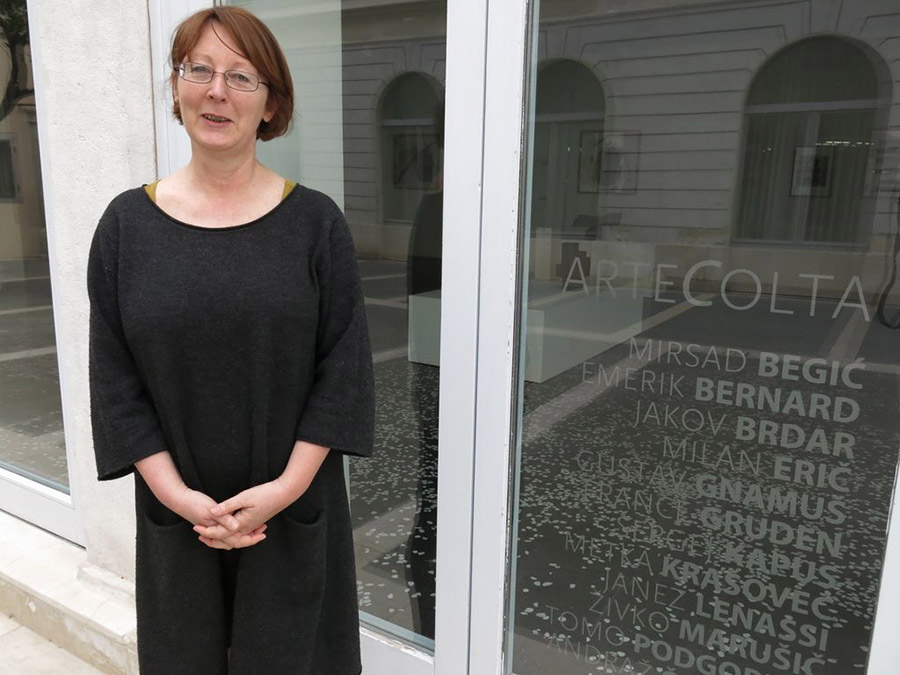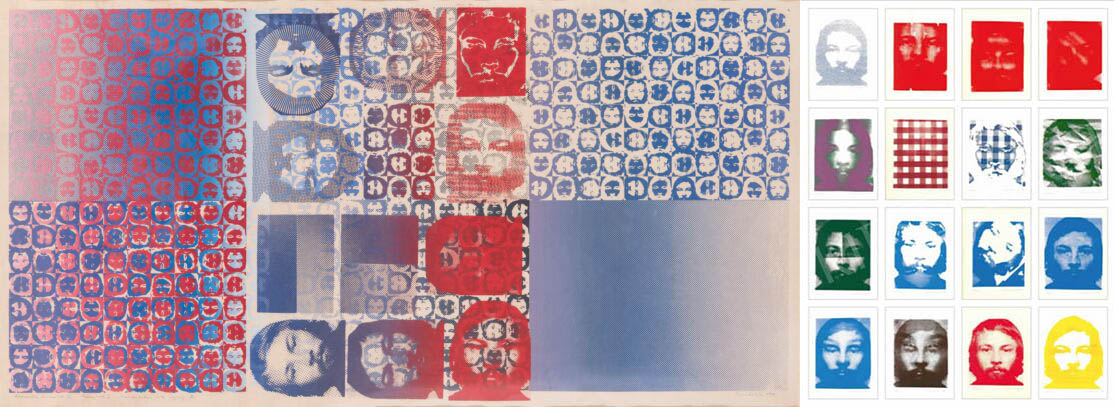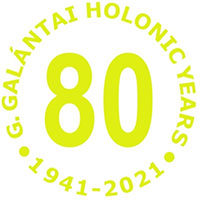Liljana Stepančič (SL)
Seven (unbiblical) phases of my memory
The gift I am sending to you, György, for your 80th birthday are my memories. I give you a part of my life, a part of me, in fact, shaped by your creativity.
***
Phase 1
The memories begin in ancient times and far away from the place where György Galántai lived. As a teenager, and when I was in the upper grades of primary school, I started visiting two galleries in the small town of Kranj. My first steps into the world of exhibitions were variegated, unencumbered, and exciting. They were in dubio pro reo - all doubts about art were judged in its favour. I didn’t know the social difference between amateurs and professionals, modernists and the new artistic practices (as the conceptual arts were then called in Yugoslavia), abstraction and figurative art. I didn’t know that in addition to works of art, the world of art exists too. For me, the different forms of creativity brought by the exhibitions in the 1970s to the industrial and socialist Kranj were a form of magic that transported me from my everyday life into a different reality.
Phase 2
Within these exhibitions I saw that art to which György Galántai belonged. I remember Živko Kladnik. Shortly afterwards, I met Franc Zagoričnik and the Studium Signum group. I experienced their actions on the streets of Kranj. Their West East mail art anthologies came into my hands. Galántai was otherwise not represented in these anthologies, but he and Zagoričnik nonetheless enjoyed a common creative universe elsewhere. Dóra Halasi informed me recently that they were present at Szövegek/Texts exhibition in the chapel gallery in Balatonboglár in 1973 and in the Danish mail art publicist project oosteuropese konkrete en visuele poëzie I-II in 1978.
Phase 3
While socialising with Zagoričnik, I learned about things that otherwise did not accompany my first steps in to the exhibitions in the galleries of Kranj. For example, ten years earlier, Marija Žagar, a Slovene language teacher at the Kranj grammar school, lost her job because of the vignettes with which Marko Pogačnik - later a member of the OHO group - decorated his essay on The Integrals, a series of avant-garde poems by Srečko Kosovel from the 1920s that, as yet, had not been published. Where there were abstract geometric patterns, the school authorities chose to see swastikas. About five years later, the Kranj municipal authorities demanded the closure of an exhibition by the OHO member Tomaž Šalamun that had been organised in one of the galleries that had become part of my regular visits. The world of art thus entered my comprehension of art. Art grew in size with the battlefield. It had become a tool for achieving the goals of the subjects of social power.
Phase 4
After 1977, when my studies led me to I spent more time in Ljubljana than in Kranj and to where I moved to in the next decade, I became a regular visitor to the exhibitions at the Modern Gallery. Its international graphic biennials could not be avoided. They were a big festival of the cultural offerings of the time and an important platform for the realisation of the culture of the new socialist bourgeoisie. In 1977 and 1979, György Galántai exhibited his experimental silkscreens in the Hungarian section of the Biennial.
Phase 5
At that time, even exhibitions and events in Ljubljana of the alternative scene that were being organised by that generation to which I myself belonged could not be avoided. They offered art production that was different from that presented by the graphic biennials and positioned themselves in society differently from the events offered by the Modern Gallery. The alternative scene introduced a new element into my notion of the role of the art world. Namely, it saw a social and political split in various conceptual approaches to creativity. Art thus became an even more frightening battlefield for me.
Phase 6
A decade passed and the end of it was marked by groundbreaking social and geopolitical events occurring in our immediate surroundings. We knew what we were leaving behind, but we didn’t know what we were getting in its place. The art world began to spin around faster and faster. In 1993, I unintentionally entered the premises of Artpool on 10 Liszt Ferenc Square in Budapest. I actually went to that house to visit the Hans Knoll Gallery with which I had been collaborating for several years. Once inside the Artpool space, and instead of white walls, I was surrounded by shelves with boxes and folders, and desks with computers and papers. It was not necessary to think twice that the universe of that art that Zagoričnik first told me about and that of the artist whom I had first encountered live with graphics at the graphic biennials in Ljubljana was gathered in this space.
Phase 7
Less than a decade after I had started heading the International Center of Graphic Arts in Ljubljana and after, on the initiative of the Board of the said Center, we had decided to establish a collection of graphic works that had presented at the graphic biennials in Ljubljana (as the International Center of Graphic Arts had taken over the organisation of the biennials from the Modern Gallery), I intentionally visited Artpool, György Galántai, and Júlia Klaniczay. We chose some of Galántai’s first screen prints for the collection of the International Center, historical prints in fact - those that had been exhibited at the graphic biennial in Ljubljana in 1977. I had the feeling that the prints had returned to the place where they were, in their own way, already at home.
***
Your art, György, came into my life by way of several different paths. One leads to classical graphics and the elitist, mainstream art world that was, at the time of my first steps along the graphic biennials, represented by these exhibitions. The second path is connected to ephemeral art and intangible artistic actions and with everything in the conceptual, neo-conceptual, and alternative scene of the then world of art that was in opposition to the graphic biennials The third path is the strongest one, it transcends the prior two ones and derives from my teenage attitude toward art in dubio pro reo. Therefore, for me, your art is neither elitism nor its opposition, it is not a rupture between the mainstream and the off scene. For me, it is a magical, complex and unified universe that transports one into fantastic worlds and, as a brick that builds relationships of the actual, real world. It is freedom and responsibility. Thank you, György.
Lilijana Stepančič
Ljubljana, 29th of April, 2021

● DELO ● GRAFICKI KOLEKTIV ● Women-Art-Politics ● muzeum ● BERKO ●

Serigraphies by György Galántai on the 12th International Biennial of Graphic Arts, Ljubljana
● Ljubljana Biennial of Graphic Arts 1977 ●


